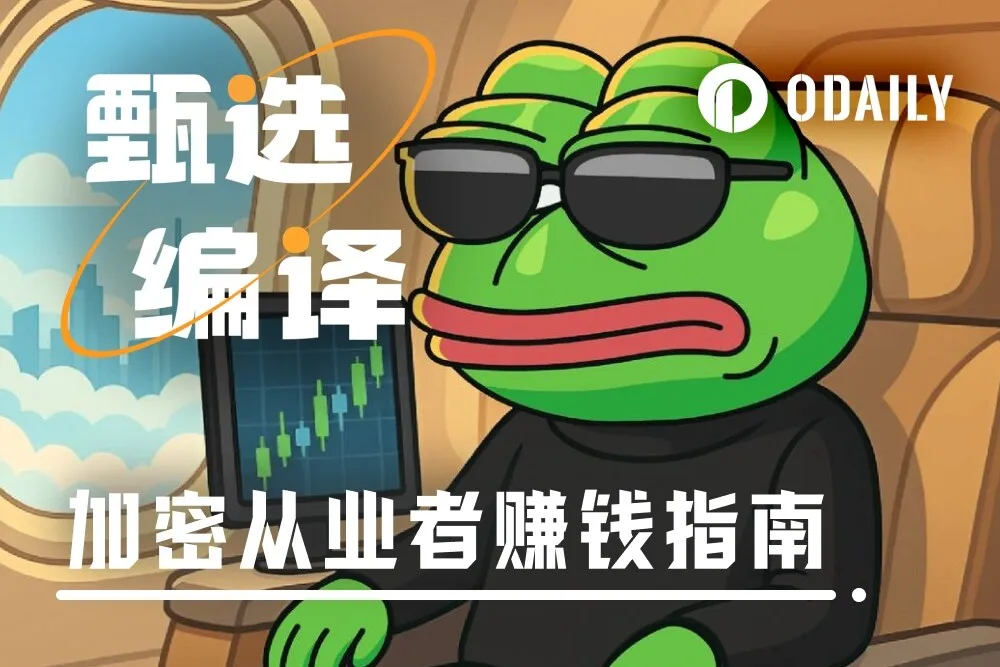The cryptocurrency market is facing a situation where the surge in tokens is intertwined with negative sentiment, and the market may enter a consolidation phase to address the challenges posed by excessive tokenization and supply pressure.
Author: Steven Walgenbach
Translation: Baihua Blockchain

The cryptocurrency market is undergoing significant changes, facing two main trends: a sharp increase in newly issued tokens and a potential market bottom formed by negative sentiment and funding rate signals. The total number of unique digital assets listed on CoinMarketCap is approaching 11 million, primarily driven by the rise of meme coins on the Solana network. This surge has raised concerns about market saturation and may impact investor attention and capital allocation.
Meanwhile, some analysts believe that widespread bearish sentiment and persistent negative funding rates may indicate that the market is nearing a local bottom, paving the way for a potential market recovery.
- Venture Capitalist Felix Hartmann: Crypto Market Approaching Local Bottom, Negative Sentiment and Funding Rates as Key Indicators
The cryptocurrency market may be approaching a local bottom, as venture capitalist Felix Hartmann points out that persistent negative funding rates and widespread bearish sentiment are key indicators of a potential reversal. Hartmann, the founder of Hartmann Capital, shared his views in a post on the X platform on February 8, stating that although he "might be a bit early," signs of a market bottom are becoming increasingly evident.
Hartmann's analysis relies on two key indicators: crypto funding rates and overall market sentiment. Funding rates are payments used to balance the futures and spot markets, which have remained negative for an extended period. This indicates that sellers outnumber buyers, which is often a precursor to market bottoms and potential reversals.
Negative funding rates indicate that shorts dominate the market, pushing perpetual futures prices below spot prices. When this trend persists, it may trigger a short squeeze, where prices rise sharply, forcing shorts to cover, thereby driving the market up.
Additionally, Hartmann noted that many high-quality altcoins have retraced to long-term trend lines, erasing much of the gains from the fourth quarter of 2024. While this adjustment is painful for traders, it is often a signal of market stabilization, indicating a potential entry into a recovery phase.
Ethereum (ETH) is one of the standout performers for the end of 2024, breaking through $4,000 in December, sparking speculation that it might challenge the all-time high of $4,878 set in November 2021. However, since then, ETH has experienced a sharp pullback, currently trading at $2,639, showing a significant decline from its peak.
Solana (SOL) has also experienced a similar trend. This high-performance blockchain asset reached a new all-time high of $295 on January 19, driven by increased developer activity and the rise of meme coins on the Solana network. However, it has since retraced, currently trading at $201.15. The overall meme coin market has also been hit hard, with the market capitalization of these speculative assets declining by 32.38% by the end of December 2024.
Crypto analyst Matthew Hyland warned that the market may not reach the December highs again for at least the next two months, or even longer. This aligns with Hartmann's assessment that, despite the continued low sentiment, the market may have entered the final stages of adjustment, followed by a potential upward rebound.
The widely watched market sentiment indicator—the Crypto Fear and Greed Index—is currently at 46 ("Fear"), down from 60 ("Greed") a week ago. Historically, fear-driven markets often experience significant rebounds, so the current sentiment may serve as a contrarian signal.
In a similar vein, crypto analyst Mike Alfred stated in a post on the X platform on January 21 that the current market sentiment—widespread pessimism—resembles past situations that led to rebounds across the industry. Meanwhile, Bitwise's Chief Investment Officer Matt Hougan observed that retail sentiment is at its lowest point in years, contrasting sharply with the still "abnormally bullish" professional investors.
2. Venture Capital Unlocking and Market Supply Dynamics
One major factor contributing to the recent market downturn is the impact of venture capital token unlocks. Between March and October 2024, approximately $35 billion worth of tokens will be unlocked, leading to a surge in market supply and downward pressure on prices.
Hartmann noted that while the market may continue to experience some volatility, the most severe phase of this dilution effect may have already passed. He stated that most of the venture capital tokens' allocations "have been sold off in the past two quarters." This means that the selling pressure from venture-backed projects may be weakening, opening the door for a potential market recovery.
While it is still uncertain whether the market has found a bottom, the combination of negative funding rates, poor sentiment, and the completion of major token unlocks provides a strong basis for a market reversal. Historically, extreme pessimism and fear often precede significant rebounds, as seen in the cycles of 2018 and 2020.
For investors, the current market environment is both risky and full of opportunities. Those optimistic about the long-term potential of cryptocurrencies may view the current situation as an accumulation phase, while short-term traders will continue to monitor technical indicators for confirmation of a reversal signal.
As the market gradually calms, participants will focus on key price levels for Bitcoin, Ethereum, and major altcoins to determine whether the market has bottomed out or if there is still more downside potential. Regardless of the short-term outlook, the broader crypto market remains in a state of constant evolution, with cyclical trends shaping the next significant movements.
- Rising Cryptocurrency Token Saturation Raises Concerns About Market Growth
In related news, the total number of unique cryptocurrency tokens and coins listed on CoinMarketCap is rapidly approaching 11 million, with the current total number of digital assets exceeding 10.99 million. The surge in newly issued tokens in 2024 and early 2025 is primarily driven by the explosion of meme coins on the Solana network.
While the explosion of digital assets reflects the ease of token creation and broader market accessibility, it has also sparked discussions among analysts and industry experts about the potential long-term impacts of this rapid expansion. Many believe that an overly saturated market of speculative assets may dilute investor interest and hinder the growth of more mature and fundamentally sound projects.
In recent months, meme coins have dominated new token issuance, with these tokens often not stemming from technological innovation but rather relying on social media hype and community-driven speculation. Some analysts argue that this trend has shifted investor attention away from technology-focused altcoins, weakening the speculative premium that this sector once enjoyed. This shift in investor interest raises concerns about whether high-quality projects can continue to attract the necessary funding.
As millions of tokens vie for market attention, participants are concerned that the cryptocurrency ecosystem may lose its competitive edge due to fragmentation. Market saturation not only complicates price discovery but also increases the likelihood of scams and "rug pulls," as speculative developers may exploit investors' FOMO (fear of missing out) to launch low-quality tokens.
Market analyst Ali Martinez recently commented on this situation, predicting that the excessive number of tokens competing for capital and investor attention may prevent the emergence of a traditional altcoin season. Martinez estimates that there are currently over 36 million altcoins in circulation, compared to fewer than 3,000 during the 2018 cycle and even fewer than 500 between 2013 and 2014.
Martinez noted, "With such a large supply, the market has undergone significant changes," emphasizing that the oversupply of tokens poses challenges for the entire altcoin market.
Historically, altcoin seasons have typically been driven by investors shifting their focus to promising projects with unique technological breakthroughs. However, in the current market environment, new tokens are emerging at an unprecedented rate, which may dilute the impact of capital inflows into legitimate projects as speculative funds are spread across a vast number of assets.
The flood of new cryptocurrencies has prompted prominent figures in the industry to reconsider their approach to token listings. Coinbase CEO Brian Armstrong mentioned in a post on January 25 that, with 1 million tokens being created weekly, the existing methods for evaluating new assets can no longer keep pace with the market.
Armstrong wrote, "Given that 1 million tokens are being created weekly and continuing to grow, we need to rethink Coinbase's listing process." He added, "Evaluating them one by one is no longer feasible."
Armstrong further suggested that financial regulators should allow trading platforms to shift to faster listing processes to keep up with the rapidly expanding market while maintaining adequate consumer protection measures. The question remains whether other major trading platforms will follow suit or establish new token evaluation and approval standards.
4. 2025: The Year of Market Consolidation?
Dan Novaes, co-founder of the EARN'M loyalty platform, believes that the current state of excessive tokenization is unsustainable, and 2025 may mark the beginning of a consolidation phase in the cryptocurrency industry.
Novaes compares the current situation to the early development of mobile applications from 2008 to early 2010, where the initial surge in app development was followed by a round of consolidation. Novaes believes that the crypto market may also undergo a similar process, with project teams merging resources and consolidating tokens to drive sustainable growth.
Industry analysts agree that consolidation will be a positive development, reducing market chaos and allowing investors to focus more on fundamentally strong projects. While the rapid creation of new tokens has democratized asset issuance, it has also led to an environment where distinguishing between promising projects and speculative noise has become increasingly difficult.
As the cryptocurrency market continues to evolve, the coming months will be crucial in determining how the industry responds to the challenges posed by token oversupply. With millions of new assets vying for investor attention, the adaptability of leading trading platforms and regulators will play a significant role in shaping the next phase of market development.
While some view the surge in tokens as a sign of ecosystem prosperity, others warn that the flood of digital assets may lead to market inefficiencies and increased volatility. Whether consolidation becomes a natural solution or new regulatory measures are introduced to streamline token issuance, one thing is clear: the cryptocurrency market is entering a new era—one that will test its resilience and adaptability.
Article link: https://www.hellobtc.com/kp/du/02/5669.html
Source: https://cryptorank.io/news/feed/74c8f-analysts-see-signs-of-a-crypto-market-bottom-amid-bearish-sentiment
免责声明:本文章仅代表作者个人观点,不代表本平台的立场和观点。本文章仅供信息分享,不构成对任何人的任何投资建议。用户与作者之间的任何争议,与本平台无关。如网页中刊载的文章或图片涉及侵权,请提供相关的权利证明和身份证明发送邮件到support@aicoin.com,本平台相关工作人员将会进行核查。




